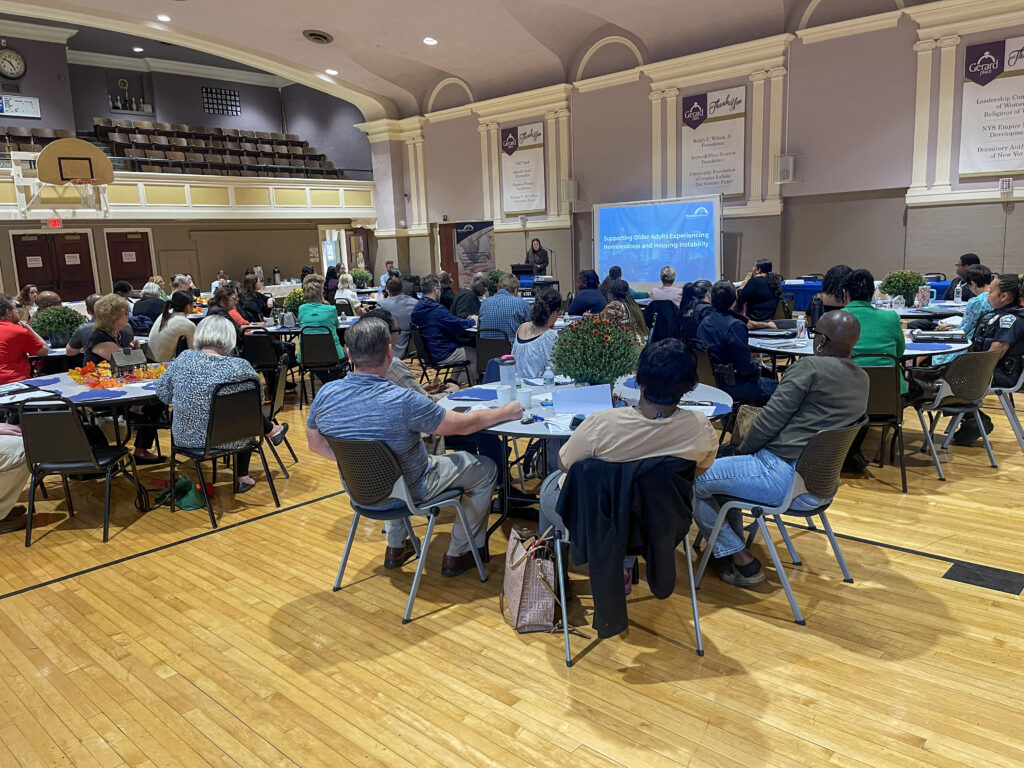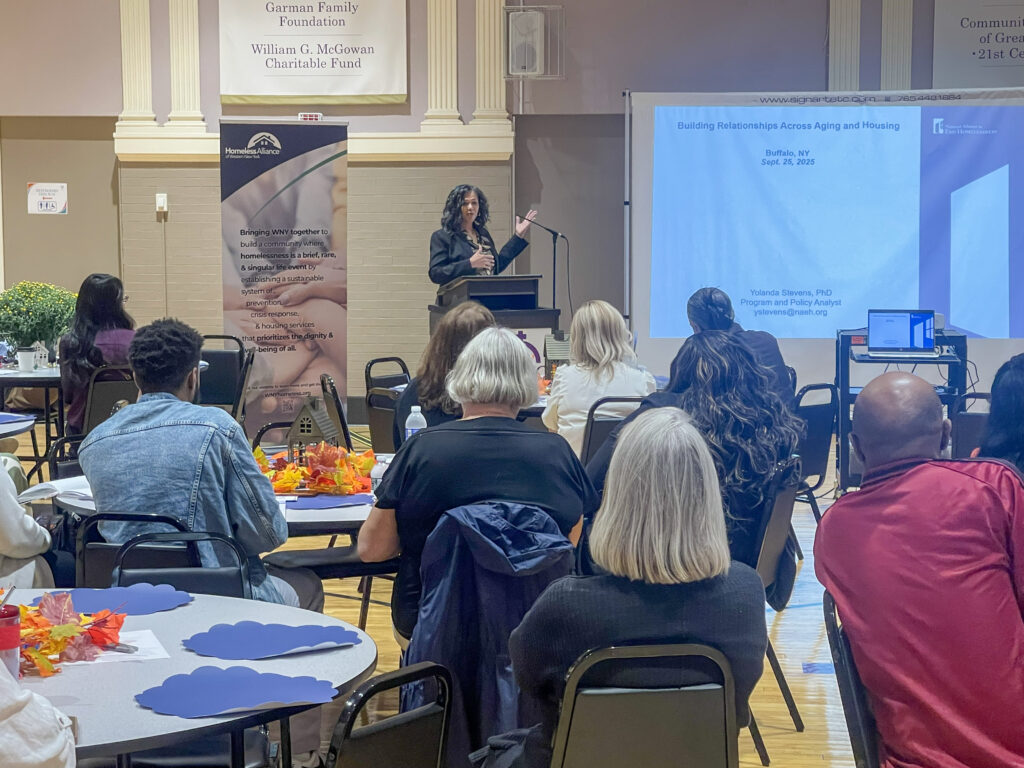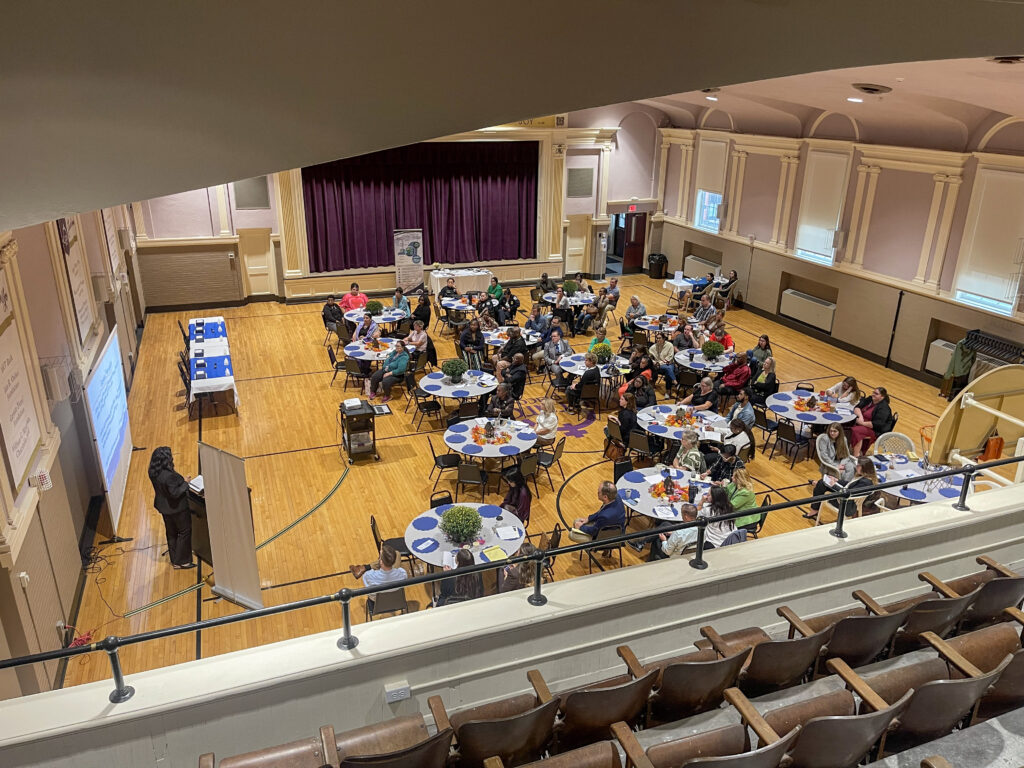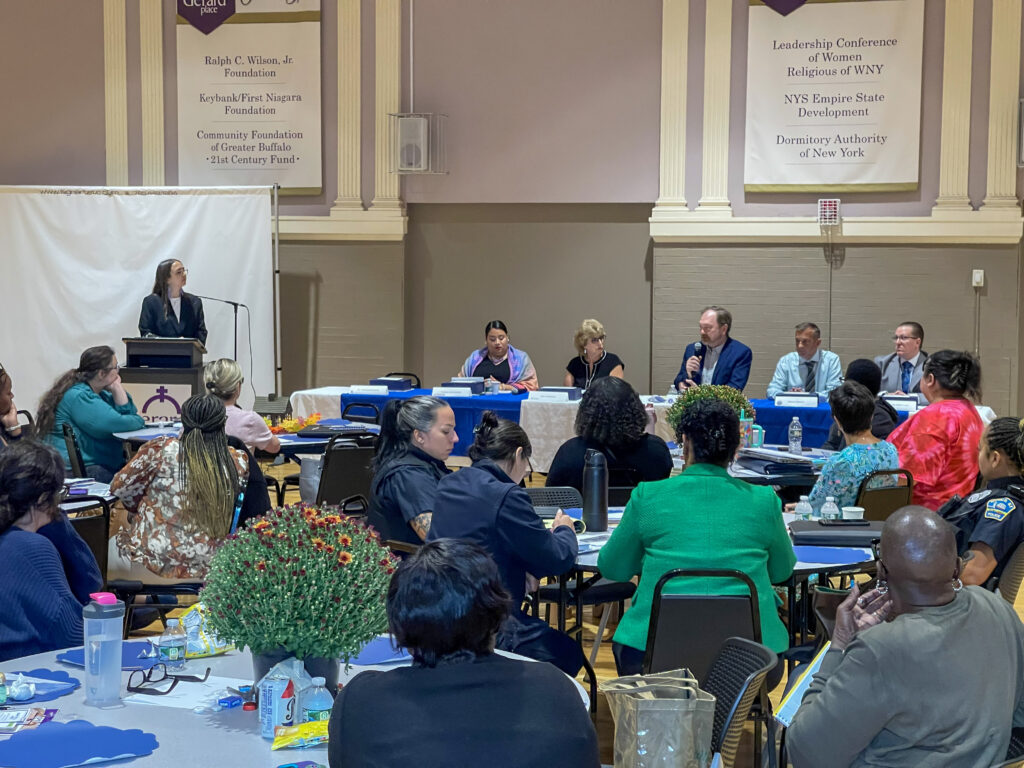NATIONAL ALLIANCE TO END HOMELESS PRESENTATION | HAWNY PRESENTATION
BUFFALO – It was a history-making day for the Homeless Alliance of Western New York as the organization hosted its first-ever Supporting Older Adults National Panel that was headlined by keynote speaker Dr. Yolanda Stevens of the National Alliance to End Homelessness this past Thursday, Sept. 25 inside the Gerard Place Community Center in downtown Buffalo.

In front of a capacity crowd of over 100 people, Dr. Stevens led off the important discussion that focused on the theme of the day; building relations across aging and housing.

Key takeaways included:
- Those aged 65 and older are the fastest-growing segment of the population, that already includes 57.8 million adults aged 65 and older in the United States (representing 17.3 percent of the total population).
- This growing population has a median income of just $29,740 a year after all benefits.
- Of this number; more than 9.3 million (9,300,000) experienced depression, 7 million (7,000,000) were food insecure and approximately 11 percent of this total population lives in poverty.
- More than one in five people (over 20 percent) experiencing homelessness on a single night in 2024 were aged 55 or older and the number of people experiencing homelessness that are 65 and older could triple by 2030.
- This population has to deal with unique needs on limited resources such as chronic health conditions, cognitive concerns, mobility limitations and fixed income.
- Five million (5,000,000) people aged 65 and older are currently living below the poverty line in the United States.
- 2.35 million (2,350,000) of older adult households in this country are paying more than half of their limited income on rent.
- 146,154 is the number of individuals who are 55 and older who experience homelessness on any given night. These are our aunts, uncles, grandparents and members of our community that are forced to live unsheltered on the streets due to mostly factors outside of their control.
- The average supplemental security income benefits for older adults with low incomes is just $554 a month, compared to the average monthly rent in the United States that has skyrocketed to $1,702 a month.
- There is currently a 7.3 million (7,300,000) shortage of affordable and available rental units for the lowest income people in our country.

To go with the staggering statistics, Dr. Stevens also stressed the only way these numbers would improve is by collaboration between local, state and federal organizations. No single agency or professional can solve homelessness or aging challenges alone; true inter-agency partnerships are needed that feature shared goals, mutual respect and accountability so that this national trend for older adults can start to reverse.

It was a perfect transition as the day then turned over to an important panel discussion that included some of the most important leaders in the space throughout Western New York. Dr. Stevens was joined by Yessica Amezquita (Program Manager for the Alzheimer’s Association WNY Chapter), Jean Morano (Associate Vice President for People Inc. Housing Services), Randy Hoak (Commissioner, Erie County Department for the Aging), Dan Szewc (First Deputy Commissioner for Erie County Social Services) and F. Alexander Fehrman (Supervising Attorney for the Center for Elder Law & Justice) as the group took questions from a moderator and the audience in a spirited discussion that lasted nearly two hours.
The talk was so important for the Western New York community as more than 14,000 adults over the age of 55 experienced homelessness in New York state in 2024, with 1,700 of those individuals experiencing unsheltered homelessness.
In our region alone, 15 percent of individuals experiencing homelessness in Western New York are 55 and older, more than 300 lack any type of health insurance and more than 150 are veterans that served our country.
A deeper dive into the local numbers also showed that average rent has gone from $695 a month for a one bedroom apartment all the way to $992 in 2024 (a 42.7 percent increase in just five years), compared to the state’s average social security benefits that are just $574 a month for these individuals. The city of Buffalo also lacks approximately 8,500 affordable housing units, a number that is sure to rise considering the growth of this population in our area.
Thursday was just the start. Collaboration is needed across the area so that we can reverse this current trend for one of our most vulnerable communities.